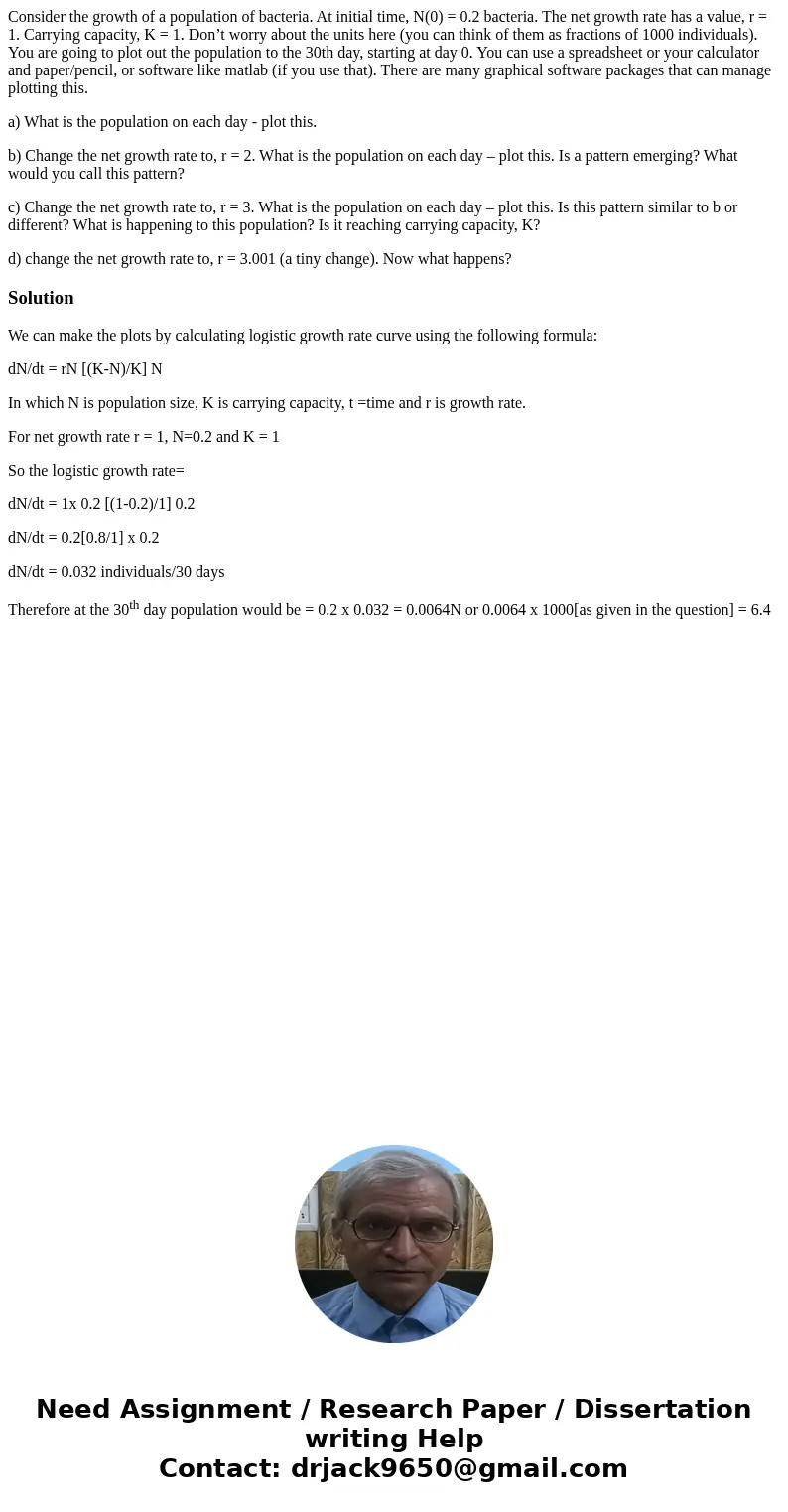Consider the growth of a population of bacteria At initial t
Consider the growth of a population of bacteria. At initial time, N(0) = 0.2 bacteria. The net growth rate has a value, r = 1. Carrying capacity, K = 1. Don’t worry about the units here (you can think of them as fractions of 1000 individuals). You are going to plot out the population to the 30th day, starting at day 0. You can use a spreadsheet or your calculator and paper/pencil, or software like matlab (if you use that). There are many graphical software packages that can manage plotting this.
a) What is the population on each day - plot this.
b) Change the net growth rate to, r = 2. What is the population on each day – plot this. Is a pattern emerging? What would you call this pattern?
c) Change the net growth rate to, r = 3. What is the population on each day – plot this. Is this pattern similar to b or different? What is happening to this population? Is it reaching carrying capacity, K?
d) change the net growth rate to, r = 3.001 (a tiny change). Now what happens?
Solution
We can make the plots by calculating logistic growth rate curve using the following formula:
dN/dt = rN [(K-N)/K] N
In which N is population size, K is carrying capacity, t =time and r is growth rate.
For net growth rate r = 1, N=0.2 and K = 1
So the logistic growth rate=
dN/dt = 1x 0.2 [(1-0.2)/1] 0.2
dN/dt = 0.2[0.8/1] x 0.2
dN/dt = 0.032 individuals/30 days
Therefore at the 30th day population would be = 0.2 x 0.032 = 0.0064N or 0.0064 x 1000[as given in the question] = 6.4

 Homework Sourse
Homework Sourse